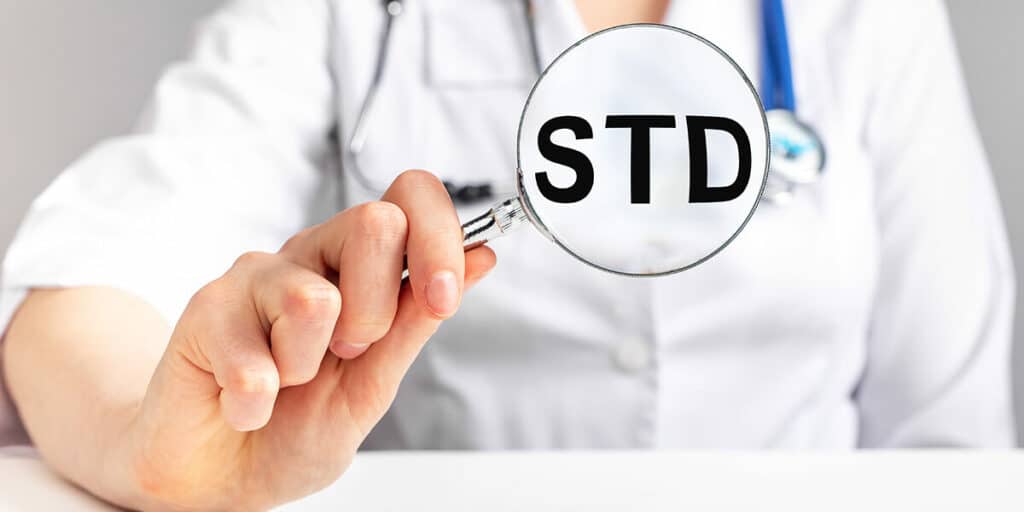Early STD Testing: Why Timely Detection Matters for Your Health
When it comes to sexually transmitted diseases (STDs), early detection and treatment are crucial for

These days, the internet is rife with misinformation about all sorts of things. Unfortunately, STDs (sexually transmitted diseases) are no exception. With so many myths about STDs floating around online, it can be hard for sexually active individuals to find the facts about STD testing amid all the noise.
However, it’s essential to educate yourself about STDs and STD testing to protect your sexual health. The spread of STDs is a public health issue, and accurate sexual education is necessary to reduce the risk of infection.
This article breaks down some of the most important facts about STD testing, potential risk factors, and how you can prepare for testing.
For some, STD testing is an uncomfortable and awkward subject to discuss. Unfortunately, societal stigma often reduces the likelihood that individuals will receive testing, largely because they’ve learned to operate on the false assumption that only “dirty” individuals contract STDs. However, anyone can contract an STD, and getting tested is critical for your health and safety.
Some people will experience symptoms right away when they’ve contracted an STD, but many infected people never experience symptoms. This means it’s possible to contract an STD and not know it, which is why it’s important to talk to your healthcare provider about routine testing.
Generally, getting STD tested anytime you engage in sexual contact with a new sex partner is a good idea. However, some individuals face a higher risk of infection than others and may require a more specific testing schedule.
The general guidelines for STD testing include the following:
Misinformation about STDs is nothing new, but in 2023, it could have more dangerous consequences. As of late 2022, syphilis infections have increased by 26%, with the total number of cases rising to a level the U.S. hasn't experienced since the 1950s. Doctors are also noticing an increase in cases of HIV and viral hepatitis.
Sexually active individuals need prompt, accurate STD testing facts to prevent contraction and slow the spread. Read on to learn some of the most relevant facts about STD testing and how a rapid STD test could benefit you.
While anyone can contract an STD, some communities face a higher risk of infection due to various factors. Particularly, STDs statistically affect women, young people, people of color, incarcerated individuals, and men who have sex with men more than the general population.
Women's anatomy puts them at higher risk of infection, as the vagina is a warm, moist environment where bacteria can thrive. It's critical for sexually active women to receive regular STD testing, as an untreated sexually transmitted disease can have serious consequences, such as:
As for young people, sexually active individuals ages 15 to 24 experience the highest rate of STDs compared to any other age group. This is because young people are more likely to engage in risky behavior, such as having unprotected sex, having multiple sexual partners, and having sex while drinking or doing drugs.
Likewise, because general sexual education focuses primarily on abstinence, young people aren't receiving the information they need to protect themselves properly.
Socioeconomic conditions also influence one's risk of contracting STDs. Poverty, increased incarceration rates, and discrimination in healthcare factor into communities of color facing a higher risk of STDs.
For gay and bisexual men, unprotected anal sex and the increased stigma surrounding MSM increase the risk of infection.
A common myth about STDs is that they go away on their own. While some STDs like genital herpes may clear up without immediate treatment, the sores will likely return, and it’s best to see your healthcare provider to manage the symptoms.
STDs can spread from person to person without the infected individuals knowing. Some STDs, such as gonorrhea and HPV, can remain in your system for weeks or even years without presenting any symptoms. That’s why Rapid STD Testing provides same-day testing so sexually active individuals can stay informed about their status.
Some individuals feel hesitant to get STD testing out of shame or fear of a large expense. However, you have many options at your disposal.
For the sake of privacy, you can go to an urgent care or a separate facility from your primary care physician. You can also use services like Rapid STD Testing to receive quick and discreet same-day STD testing.
When you give a blood sample for routine lab testing, the doctor must instruct the lab on what specific things they’re looking for. Unless you ask for an STD screening, you can’t rely on a standard blood test to tell you whether or not you’ve contracted an STD.
When preparing for an STD screening, it can be helpful to think about or even write down relevant information about your symptoms and sexual history. For example, you could have answers to the following questions ready for your doctor or healthcare provider:
The general incubation period for most STDs is one to three weeks, but remember that some can lie dormant without presenting symptoms for months at a time.
Likewise, it might be beneficial to consider what kind of testing you need depending on your circumstances. For example, healthcare professionals recommend that sexually active women, men who have sex with men, and people with HIV receive screening for chlamydia and gonorrhea at least once a year.
Depending on your age, sex, and the risk factors you face, your doctor may advise you on which STDs to test for and how often you should do so.
The type of test you receive will depend on your symptoms and risk factors. In general, healthcare professionals use four types of tests to detect STDs:
If you'd prefer an at-home test, Rapid STD Testing offers a 10-panel STD test to ensure comprehensive, accurate results.
Now that you’re aware of some of the most important facts about STD testing, you may feel more empowered to go schedule testing. Generally, it takes anywhere from 24 to 72 hours to get test results back. During this time, it’s normal to feel anxious, which is why it’s crucial to have support while you wait.
Spending time with friends or loved ones can take your mind off things. If you're someone that struggles with anxiety, consider lowering your caffeine intake while you wait for your results to avoid unnecessary spikes in anxiety. Above all, try to continue your day-to-day life as normally as possible.
If it takes multiple days for your results to come back, you may feel anxious that this lengthy wait period means bad news. However, how long it takes will vary from test to test, provider to provider, and whether or not the laboratory processing your results experiences any delays.
If you receive a positive test result, don’t panic. Most STDs are curable, and those that aren’t are treatable. Likewise, while unlikely, it is possible to receive a false positive. If you believe you may have been misdiagnosed, you can speak to your healthcare provider about retesting or visit a private STD clinic to get a second opinion and ensure accurate STD testing.
Remember that the best thing you can do for your sexual health is to be honest with your partners and healthcare providers about your status.
It’s essential to know the facts about STD testing to protect your sexual health. At Rapid STD Testing, we provide comprehensive, accessible STD testing to help you stay informed, safe, and healthy.
If you’re interested in a rapid STD test, call us today at (866) 872-1888, or use our handy “find a lab” tool to locate a clinic near you!

No embarrassing exams, long waiting lines, or multiple visits. Just a quick lab visit for fast results.
Discover a lifestyle-focused approach to quality content at RapidSTDtesting.com. Unlike others, we don't rely on gimmicks or fabricated data to lure visitors. Our commitment goes beyond clicks – we're dedicated to answering the questions you search for online. With a team comprising medical experts and content specialists, our articles are meticulously crafted to promote STD testing, educate, and dismantle social stigmas.
Embrace a confidential atmosphere with our private testing options, ensuring your privacy is paramount. Every article is meticulously fact-checked and approved by medical advisors, guaranteeing accuracy and reliability. Our team, comprised of doctors and medical professionals, ensures that each piece of content serves a purpose – to inform, educate, and promote awareness.
Join us as we bridge the gap between medical expertise and lifestyle choices. RapidSTDtesting.com is your trusted source for informative, medically vetted content.